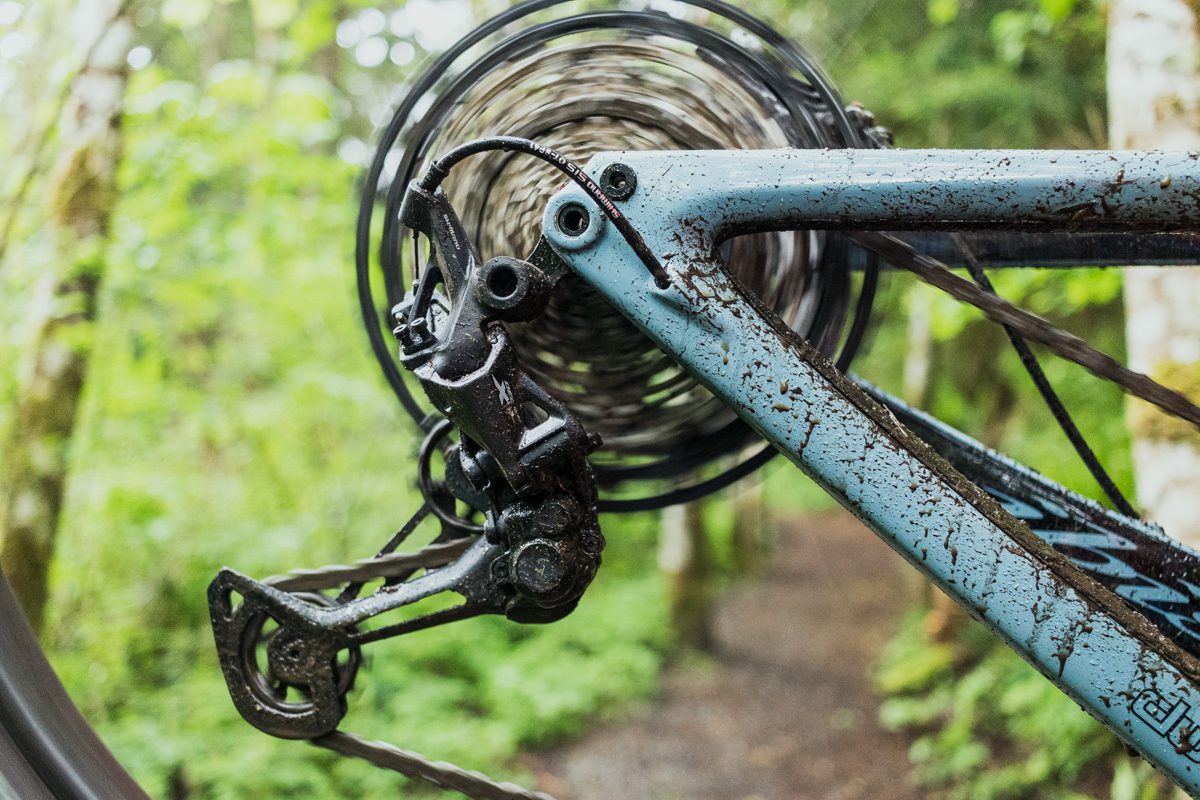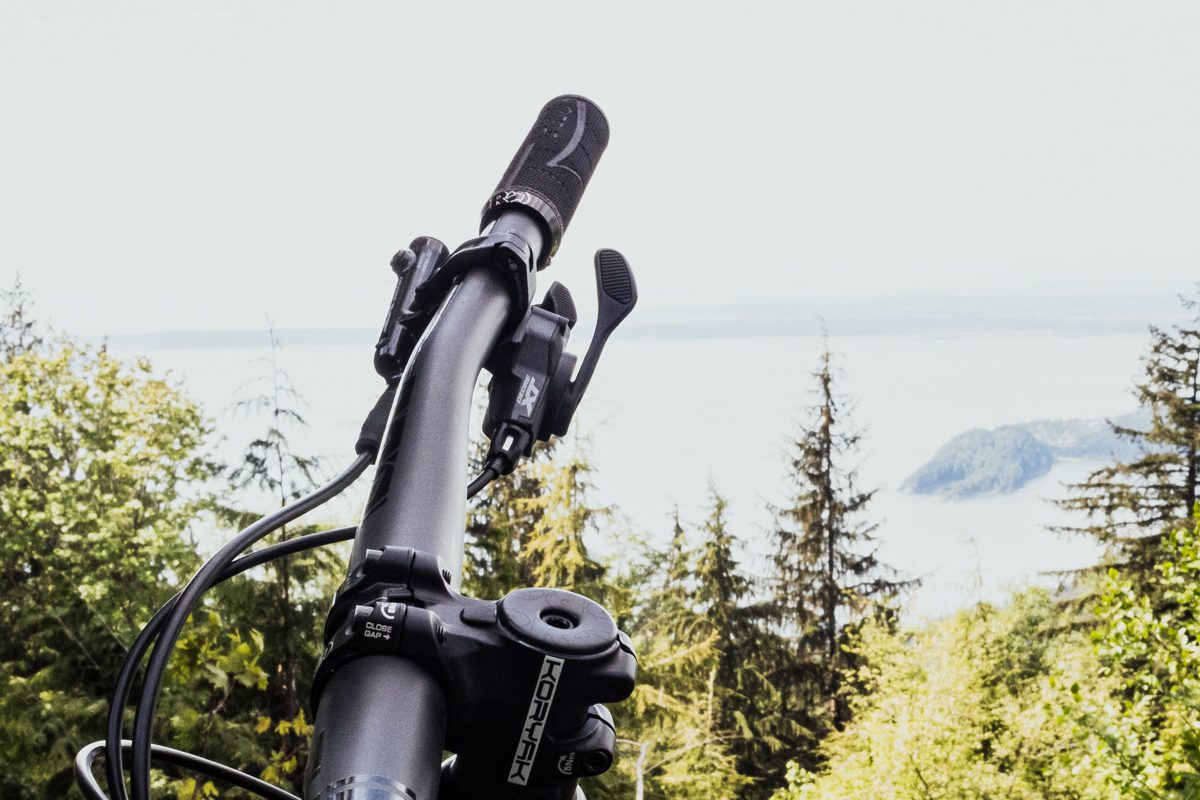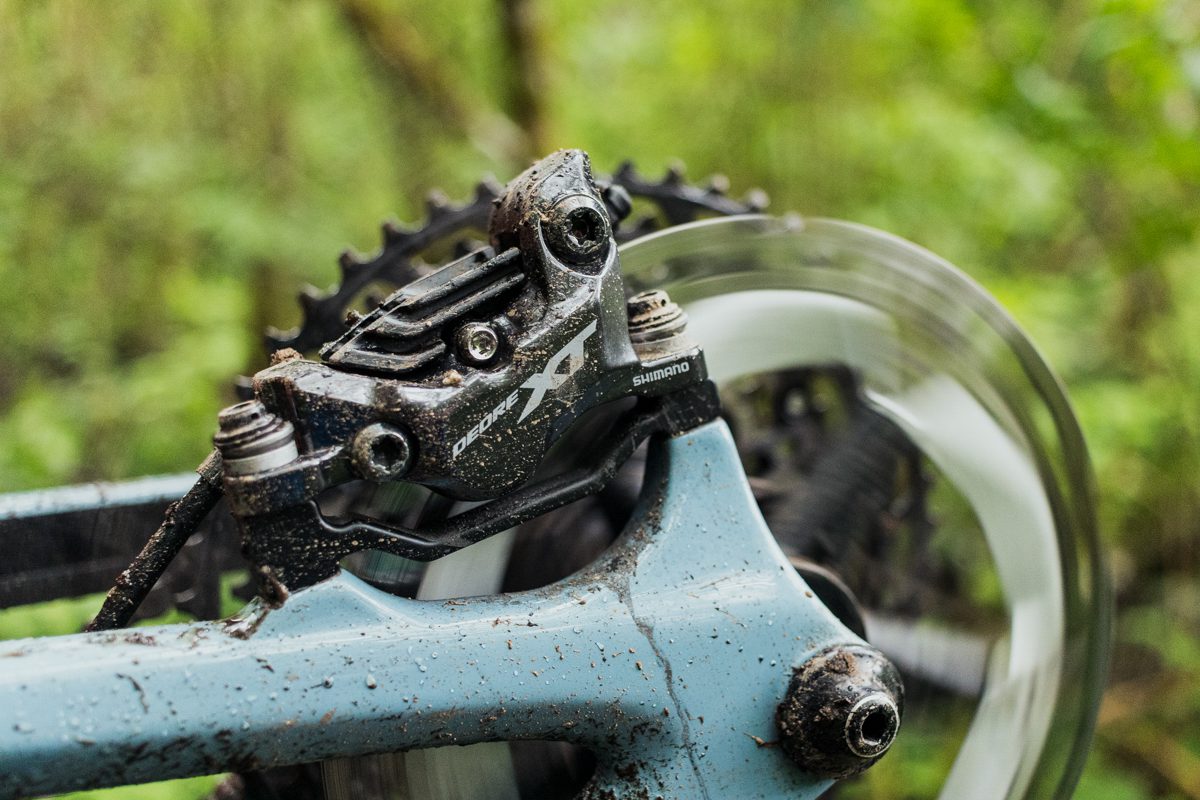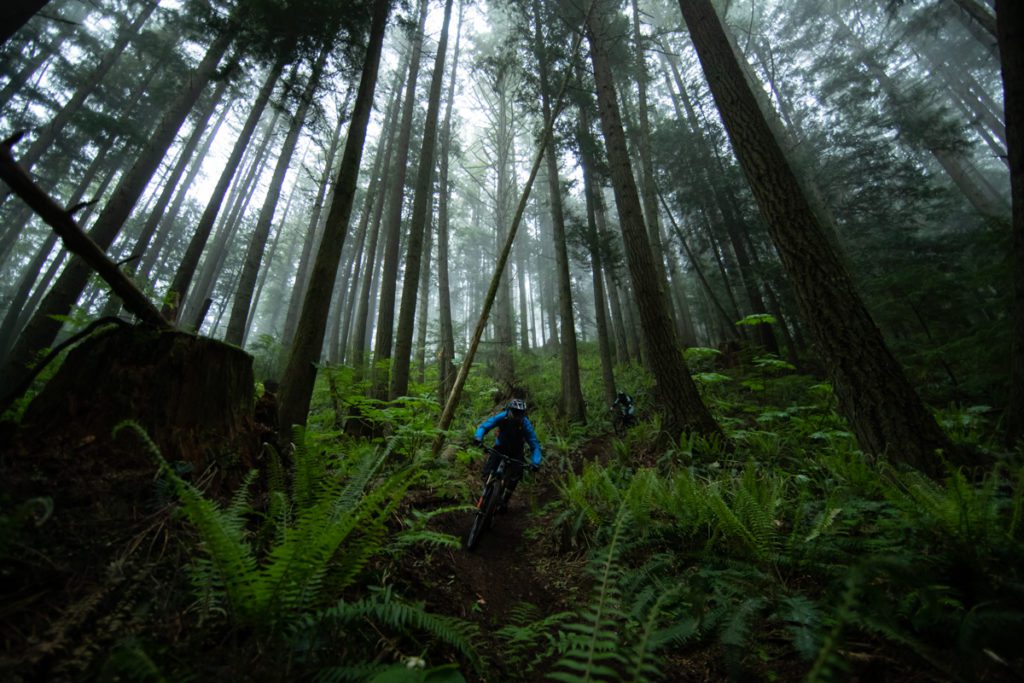Could the new Shimano XT be better than XTR?
The second-tier group inherits many of the features that its top-of-the-line sibling has, except for the price

When Shimano released its new 12-speed XTR group to the world last year, everyone was excited to have a competitive 1 X 12 drivetrain from the Japan-based component makers. For most weekend warriors and budget minded shredders, however, the flash and lightweight XTR components will never grace their bikes. That’s OK though, because for these riders, Shimano has XT. Thanks to the line’s updates, you won’t have to sacrifice much to save a lot.
Shimano Deore XT M8100 cassette
The new XT cassettes come with 12 cogs in two configurations: a 10-51 tooth and a 10-45. You can choose between the wide range of the 10-51 or the closer gear steps of the 10-45. The XT gear ratios offer a tighter gear step on the last two cogs to help you shift into easier gears on hard steep climbs. The close range of the lower gears paired with the Hyperglide Plus gear ramping means you never have to let off the gas while climbing to shift. For me, this feature really sets Shimano apart from other shifting systems. The ability to shift under pedalling load eliminates the need to ramp up your cadence to accommodate a shift when you would prefer to focus on the trail and your momentum.The XT cassette doesn’t get any titanium rings like XTR, but a mix of aluminum (black cogs) and steel keep it durable with a weight of 470 g(10-51 tooth). The one downside of the new cassette is it requires Shimano’s new micro spline freehub, which currently isn’t widely available, but will only be getting easier to find.
Shimano Deore XT M8100 derailleur and crank

The new XT rear derailleur retains the inboard Shadow Plus design, but is now a 1-by specific mech with a 13-tooth pulley that accepts cogs as large as 51-tooth. There is a 2-by rear derailleur available, but it only accepts cogs as large as 45-tooth. The XT crank is a sleek looking Hollowtech design featuring a direct-mount chainring in 28-,30-,32-,34- and 36-tooth options. The new chain and chainrings use Shimano’s Dynamic Chain Engagement Plus technology. This feature builds on the previous generation of DCE to ensure even smoother and more secure chain retention. No chain guide required. There is a double crankset available with 36/26-tooth rings that can be converted to a single-ring setup. Shimano also updated its front derailleur which comes in three mounting options.
Shimano Deore XT M8100 shifters
XT borrows the Ispec bar-mounting system from XTR but does lose a slight amount of adjustability in favour of stronger clamps. This setup likely won’t affect anyone unless you have a unique shifter/brake lever setup. I was able to get both brakes and shifters exactly where I wanted them with no issues. The XT shifter allows you to shift two gears at a time on the way down the cassette, which is one more than Shimano’s competitors. The multi-release lever allows you to push or pull into a harder gear, which means you don’t need to fish around for a lever blade if you like resting your hands on top or your bar. The front shifter is a mono-lever design: one push in to shift up and push again to shift back down. The lever would also work great as a Fox lockout if you are into that kind of thing, but if not, you should put Shimano’s dropper post remote there instead. Shimano included a rubber pad on the levers to help with grip and avoid slipping when wet, which was a nice touch considering how much grip tape I see on lever blades these days.
Shimano Deore XT M8100 brakes
When Shimano updated the XTR brakes, the company did a great job of improving the feel and modulation of the brakes. The new XTR four-piston trail brakes offer tons of easily manageable power with a comfortable lever. If you want to save from grams, there’s a two-piston model that can scrub your speed. The new XT brakes offer some of the same great features including the four-piston caliper and adjustable lever position. They also come with Shimano’s ServoWave technology, which helps adjust the pads’ contact points. The XT rotors benefit from Shimano’s Freeza heat-dissipating technology found in XTR. The calipers accept Shimano’s Icetech finned pads to help eliminate heat and brake fade on long descents.
Shimano Deore XT M8100 hubs and wheels
Shimano has released two sets of wheels under the XT banner. The M8100 comes with a 24-mm internal width aluminum rim and straight-pull spokes. The M8120 has a 30-mm internal width and j-bend spokes. I didn’t get to ride the wheels, but the M8120 looks like a sturdy, easily serviceable workhorse wheelset.
Shimano Deore XT M8100 pedals
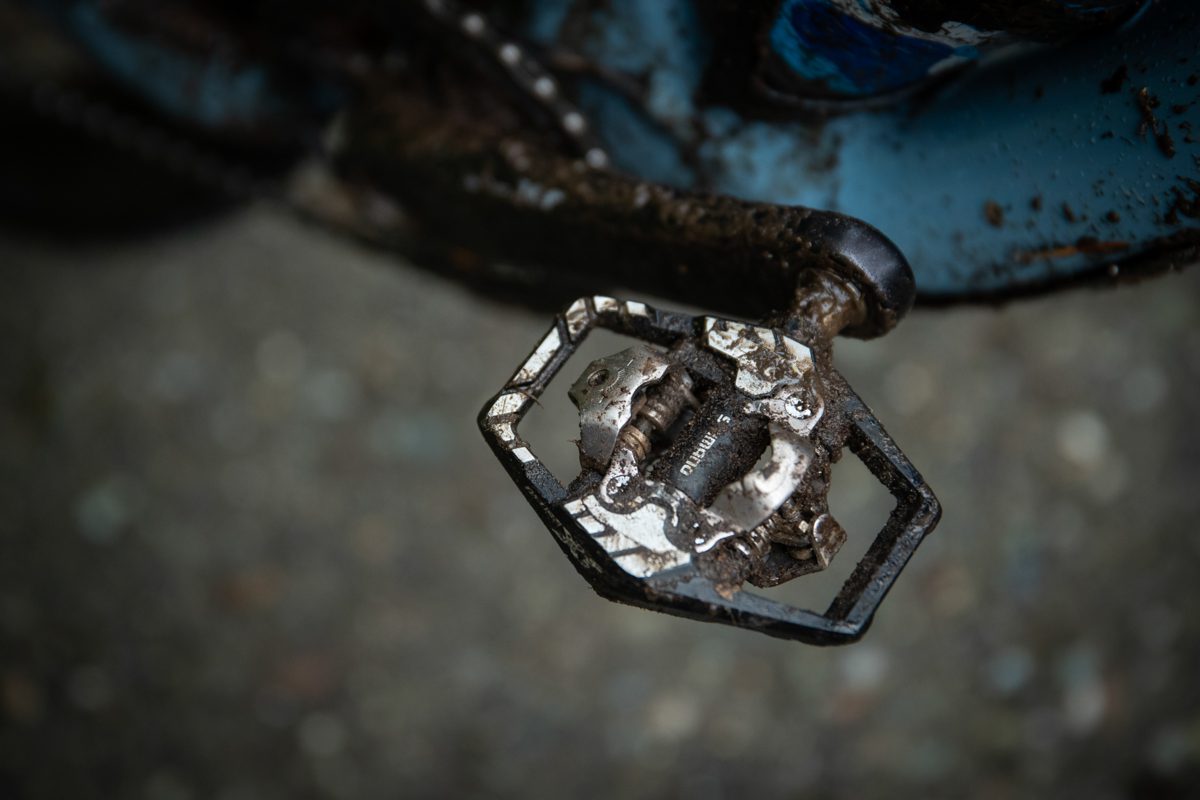
The new XT pedals continue the trend of borrowing features from the top-end XTR by widening the contact platform on both the SPD pedals, creating a better platform and engagement with all types of shoes. The trail pedal sees an extended rear interface that helps with stability on rough trails. Shimano is offering two sizes of flat-pedal options, both with adjustable pins and a concave shape to keep your feet glued to the pedals.
XT on the trail
I had the chance to try out the new parts in the loamy trails of Bellingham, Wash., which presented plenty of opportunities to test shifting while going up and braking while coming down. The Hyperglide Plus shift ramping continues to impress me when it comes to smooth shifting. Clean precise clicks from the shifter are matched with smooth transitions from one cog to the next. The tighter gear spacing on the easiest cogs and ability to shift under load really make a difference when the trail gets steep and you need to grab an easier gear without worrying about waiting for the shift or altering your cadence. I can’t stress how much of a difference this makes when you don’t have to worry about the timing of your shifts. I got so reckless while riding the new XT that when I came back to my own non-Hyperglide Plus bike I had to adjust back to timing shifts properly.
On descents, the brakes provided more than enough power to stop this size large journalist and the Santa Cruz Bronson I was atop. The modulation in the brakes is vastly improved over the previous on/off generation of Shimano brakes. The XTR versions, however, do control power noticeably better than the XT. I didn’t notice any brake fade on longer descents with the XT brakes. Even when things got wet, the brakes performed flawlessly. The new front crank and chainring held my chain in place while crashing over rocks and roots without issue, while also maintaining a smooth feel while pedalling. Considering the price difference between XT and XTR, Shimano has done a great job of trickling down the best of XTR into a more affordable and likely more durable group of parts. If you are looking for something even more value-oriented, Shiamno has also released SLX at the same time. SLX offers much of the same tech (12-speed, Hyperglide Plus, four-piston brake caliper), but at an even lower cost than XT. Expect to see full groupsets of select XT parts available in Canada June 14.
Shimano Deore XT M8100 Weight And Pricing
| Part | Model No. | Weight (g) | Price |
|---|---|---|---|
| Rear derailleur | RD-M8100-SGS | 287 | $155 |
| Crank | FC-M8100-1 | 620 | $210 |
| Chainring | SM-CRM85 | (incl. w/crank) | $85 |
| Shift lever | SL-M8100-IR | 120 | $85 |
| Disc brake set | BL-M8100/BR-M8120 | 301 | $210 |
| Rotor | RT-MT800-S | 109 | $75 |
| Chain | CN-M8100 | 252 | $60 |
Shimano SLX M7100 Weight And Pricing
| Part | Model No. | Weight (g) | Price |
|---|---|---|---|
| Rear derailleur | RD-M7100-SGS | 316 | $100 |
| Crank | FC-M7100-1 | 631 | $145 |
| Chainring | SM-CRM75 | (incl. w/crank) | $45 |
| Shift lever | SL-M7100-IR | 117 | $55 |
| Disc brake set | BL-M7100/BR-M7120 | 311 | $180 |
| Rotor | SM-RT70-S | 133 | $40 |
| Cassette (12-speed, 10-51) | CS-M7100-12 | 534 | $135 |
| Chain | CN-M7100 | 252 | $44 |
